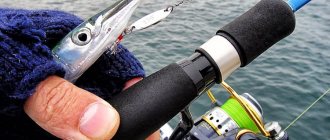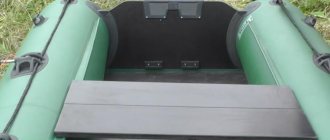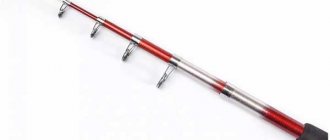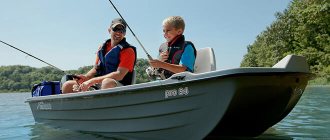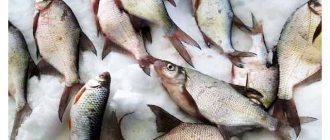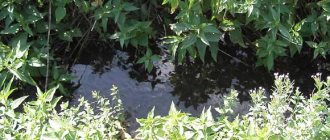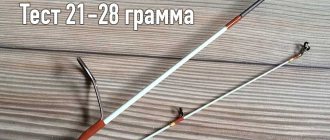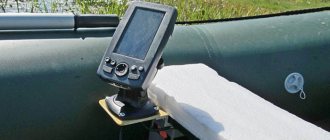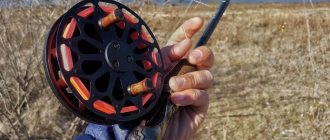For centuries, anglers have used different types of boats to reach the most productive and fishing spots. Over the years, the types of boats they used evolved and improved. Many new types of boats were created for use in different conditions. In this article we will talk about the most common types of boats for recreational fishing to help you choose the right one.
Given the incredible diversity of fish species and their habitats, such a number of different types of boats is quite justified. Depending on whether you plan to sail on lakes, calm or mountain rivers, coastal waters or the sea, you will need a boat from a suitable type of manufacturer. Some boats offer more functionality, while others offer more comfort and space.
Having looked at the different types of boats, in this article we will describe the main features, the amenities they typically offer, and what type of fishing each type is best suited for. We will also talk about several pros and cons for each type and its features.
Flat boat (Skiff)
Flat boats or skiffs are mainly used in shallow and still water. Their bodies are so flat that they usually submerge only 5-10 centimeters in water. This makes flat boats indispensable for fishing in narrow waters and an excellent option for use in marshy areas.
Length: usually 4-5.5 meters
Capacity: Typically 2 people, plus captain
Expected amenities:
- Navigation equipment
- Safety equipment
- Fish tank
- Low power outboard motor (often less than 100 horsepower)
- Trolling motor (sometimes)
- Shallow water anchorage system (sometimes)
- Forward casting platform (sometimes)
Peculiarities:
- Wide bow with platform for casting tackle
- Very shallow landing
Pros:
- You can fish in shallow waters
- Usually provides peace and quiet on the water
- No engine noise to scare away fish
- The flat bow of the boat provides excellent visibility
Minuses:
- Limited storage space for personal items
- Very sensitive to weather conditions
- Can only be used in shallow water
- Typically has little space for shade or other protection from the elements
Aluminum boat
When it comes to inshore fishing, nothing beats an aluminum boat. Its low profile allows it to navigate shallow waters, but at the same time its higher freeboard allows it to withstand stronger currents than a flat boat can handle. This is why they are very popular among anglers fishing in large bays.
Length: usually 5-7 meters
Capacity: usually 4 people plus captain
Center Console Boat
Center console boats are perhaps the most versatile and comfortable of all boat types. As the name suggests, the helm is located on a console in the middle of the boat. This allows for greater mobility - you have excellent visibility and can move freely around the boat with little risk of tangling the line.
What's more, many center consoles come with an onboard toilet, giving you more comfort than other boats of a similar size. Center consoles come in a variety of sizes - from 5 to 12 meters in length.
Length: 5-12 meters
Capacity: 4–6 people (depending on boat size), plus captain.
Expected amenities:
- Navigation equipment
- Safety equipment
- Fish tank
- boat motor
- Trolling motor (sometimes)
- Shallow water anchorage system (sometimes)
- Toilet inside console (sometimes)
Peculiarities:
- Center console that creates shadow
- Availability of a toilet (sometimes)
Pros:
- Placing the controls in the middle means you can walk around the sides of the entire boat (360° fishing capability). This means you can follow the fish as they move around the boat, making fishing more efficient. Plus, you'll be less likely to break your rod or get tangled.
- They are usually cheaper to operate than larger boats.
- Great flexibility, it can be used to fish inshore or offshore depending on the weather and what you want to do.
Minuses:
- Less comfort and amenities than larger boats. There may or may not be a toilet. If so, it's inside the console. On smaller boats this may be inconvenient for larger people.
- There is usually very little shade (at least limited to the T-top) and no air conditioning or other protection from the elements.
Boat classification
Let's consider the main criteria and parameters of boats.
Recently, PVC material has become widespread in shipbuilding. Advantages of PVC:
This material has already completely replaced rubber.
As a rule, inflatable boats are made from five or seven-layer reinforced PVC. Typically from 600 to 1100 grams per square meter. The thicker the material, the greater the strength of the boat. But the weight of the boat will also be greater.
Inflatable compartments
The number of independent inflatable compartments affects the survivability of the boat on the water. And the more independent inflatable compartments, the better. Typically, boats without a glued transom have two separate inflatable compartments.
In this case, it is better if these independent compartments are divided in the middle of the craft into the following compartments:
This design will allow you to swim to shore if one of the cylinders is damaged.
In boats with a glued transom, as a rule, there are three independent compartments:
Models with an inflatable bottom have an additional buoyancy compartment.
The diameter of the cylinders should be selected based on the conditions of the reservoirs. The main criterion will be the height of the possible waves on the reservoir.
The small diameter of the cylinder on large bodies of water can overwhelm with water during waves. But don't go for big sizes.
Large sides have more windage and it will be more difficult to sail on such a model:
- against the wind;
- with a side wind.
And also large cylinders reduce internal space.
If you plan to install a motor, then you should choose a watercraft with a glued transom. In addition, the transom is used to install auxiliary equipment:
- spinning rod holders;
- echo sounder sensor;
- transom wheels.
The transom must be made of moisture-resistant plywood. It must have pads:
The covers are used to protect the transom from chips and damage when installing the motor.
On models without a glued transom, it is possible to install a suspended transom. But this option should only be considered if you plan to use an electric motor.
Deck (floor)
Having a hard floor increases comfort. A hard floor is indispensable when fishing with a spinning rod while standing. It allows you to stand and move confidently. A hard floor improves ride quality and rigidity, especially when moving with a motor.
There are several types of decks. Each type has both advantages and disadvantages. The choice of flooring depends on where and how you intend to use the boat:
- The inflatable bottom in its classic form does not apply to hard floors. However, modern inflatable bottoms are in no way inferior to hard flooring.
- Slatted flooring is the cheapest and simplest option for a hard floor. It has relatively low rigidity, sufficient only for a rowing model. Although this floor is inferior in rigidity to the following types of floors, it allows you to stand quite confidently. In addition, the slatted floor easily folds and unfolds. Often, the slatted floor does not need to be removed from the boat at all when folding it.
- "Book". The floor consists of 3-4 pieces of plywood. The plywood parts are connected to each other with PVC tape. This floor is folded according to the “accordion” principle. The “book” floor has sufficient rigidity for movement under a motor of up to 3–4 liters. With. Just like the rack and pinion one, it is easy to install and remove from the boat. This type of floor is heavier than a slatted floor and takes up more space when folded.
- The flooring consists of 4–6 separate parts (plywood or aluminum). The separate parts are connected using lateral stiffeners. This type of floor is the most common among models with a glued transom. The paul floor has sufficient rigidity for movement under a motor of over 5 liters. With. and is used on most inflatable boats. Disadvantages of such flooring: significant weight, time required for assembly and disassembly.
Catamaran
Catamarans have two hulls and are usually used for sea fishing. The two-piece hull provides greater stability in difficult weather conditions and greater fuel efficiency compared to conventional monohulls.
Length: usually 7.5-18 meters
Capacity: from 6 to 50 people
Expected amenities:
- Navigation equipment
- Safety equipment
- Fish tank
- Toilet
- Rod holders
- Small kitchen
- Sleeping area (sometimes)
Peculiarities:
- Two body parts of the same shape and size
- Enough space
- Internal seating area
Pros:
- More stable than most other boats
- Good aerodynamics - this means they require less energy, resulting in lower fuel costs
- Can be very comfortable and luxurious
Minuses:
- Slower than some other types
Kayak (kayak)
Kayaks are fishing vessels for one angler (and in rare cases, two), used for fishing in rivers, still water and creeks. Due to the relatively small size of kayaks, groups of anglers can easily move and maneuver them through narrow and shallow waterways.
Since most kayaks come without a motor, kayaks require some physical training to operate them. Kayaks are sometimes even used for sea fishing!
Length: usually 3.5-4.5 meters
Capacity: 1 (very rarely 2 in a specially designed kayak)
Facilities:
- Rod holders
- Sometimes trolling motor and/or shallow water mounting system.
Pros:
- Kayaks are small, light, quiet. This means they can access narrow and shallow waterways that are inaccessible to other boats. This makes them ideal for fishing on not very stormy rivers and in thickets.
- They are very easy to transport and can even be taken with you on a larger boat to access remote fishing spots.
Minuses:
- Requires more manual work than conventional motor boats. If the kayak does not have a motor, you not only need to cast a fishing rod, but also row it yourself. The key factor here is endurance.
- Not suitable for beginners. Even with an experienced kayak guide next to you, you will be alone in the boat, handling the equipment, oars and fishing rod. Those who decide to go to sea by kayak should gather in groups and take all safety precautions.
- Very little storage space
Drift boats are similar to kayaks, but they can carry more people and have added comfort and technology that kayaks typically lack (such as heating).
What to look for when choosing an inflatable boat?
The body of water where it will be used
First of all, you need to decide on which body of water the boat will be used:
- When fishing on large bodies of water (for example, Lake Ladoga), you will need a large and powerful seaworthy boat.
- When fishing on small ponds or narrow rivers, you should not spend a lot of money on purchasing a powerful boat; you can quite limit yourself to the simplest and lightest inflatable model.
Capacity
You should decide in advance on the crew of the boat: the more passengers it can accommodate, the higher the cost. Purchasing large and spacious models is not always advisable, since inflatable boats designed for a large number of people can often only be transported by car.
Let's celebrate! When choosing, it should be taken into account that the carrying capacity of most models usually exceeds the volume of cargo that can be placed in them.
Transom
The transom is the most significant part of any inflatable boat, since the quality of its gluing and manufacturing determines the degree of safety during operation of the boat.
On sports models, a metal profile is usually used as the main transom material, but for fishing boats, plywood with increased water resistance will be sufficient.
When choosing, you need to pay attention to the following points:
- The quality of the paste. Various manufacturers use tape or a special profile for sealing; reliability will depend not on the method, but on the quality of its execution.
- The presence of an additional metal lining that protects the transom from destruction if the craft has an engine.
- The standard height is 385 mm, which is enough to install a motor with a short drive shaft.
- The presence of an angle of 5-7° relative to the vertical surface. Some models lack this feature, which reduces the number of types of engines that can be installed on them, and also impairs the adjustment of the motor tilt.
Equipment
Most leading manufacturers equip inflatable boats with additional accessories. Most often, the kit includes handles for ease of transportation, kits for self-repair, inflatable seats and other devices that may be useful during operation.
Possibility of installing a motor
The motor can be installed on many modern inflatable models, regardless of their size; first of all, to do this, you should pay attention to the features of the transom described above in the article.
Let's celebrate! Small models with a load capacity of up to 250 kg usually require small motors whose power does not exceed 3.3 hp.
For multi-person vessels with a large load capacity, more engines with a power of about 15 hp are required.
Inflatable boat
Inflatable boats are ideal for sailing through freshwater rapids. These are the boats you usually think of when you think of rafting. They'll take you through rough rivers like no other fishing boat, but don't expect to come out dry at the end of your trip.
Motor slate boat
A good option for quickly moving around a body of water is a motor slate boat. The transom in it is built into the frame. Safety is enhanced by protruding compensator buoys.
A design of this kind allows you to install a motor with a power of more than 10 hp. Moreover, such a boat has more compartments compared to a rowing boat, and thicker fabrics are also used in such a boat. This provides greater safety and reliability.
Inflatable boats with built-in transoms may have inflatable keels that provide them with planing, which significantly increases the boat's speed and fuel efficiency.
Perch boat (bass)
Anglers typically use boats for bass fishing in fresh water and, as the name suggests, generally for bass fishing. They have a lower freeboard and a V-shaped hull with an open bow.
Most often, bass boats are equipped with high-tech navigation, a powerful outboard motor and comfortable seats. Because of all of the above, they have a fairly high price tag compared to other types of boats that are also suitable for freshwater fishing.
Length: about 5 - 7 meters
Capacity: 2–4 people, including captain
Expected amenities:
- Navigation equipment
- Safety equipment
- Fish tank
- Outboard motor
- Trolling motor
- Shallow water anchorage system
- Fishing seat (regular)
Peculiarities:
- Comfortable chairs
- Everything you need for fishing (usually high-tech boats)
- Large open space on the bow for casting rods
Pros:
- Best Fishing Boat for Fresh Water
- Comfortable seats
- Fast enough
Minuses:
- Capacity is only 2-4 people
- More expensive than alternatives
Duralumin fishing boats
Duralumin boat SL470
Duralumin boats are made from durable duralumin, and since it cannot be welded, all parts are connected with rivets.
Pros:
- It holds up well; the likelihood of getting a dent or getting a hole when colliding with an obstacle is extremely low.
- Corrosion resistance.
- Long service life (more than 20 years).
- Easy maintenance.
Minuses:
- Weak points are rivets. Over time, due to heavy loads, they can be cut off.
- For transportation you need at least a roof rack on the car.
- Increased noise when moving on water (the duralumin body itself serves as a sound resonator).
- All duralumin watercraft are subject to mandatory registration.
